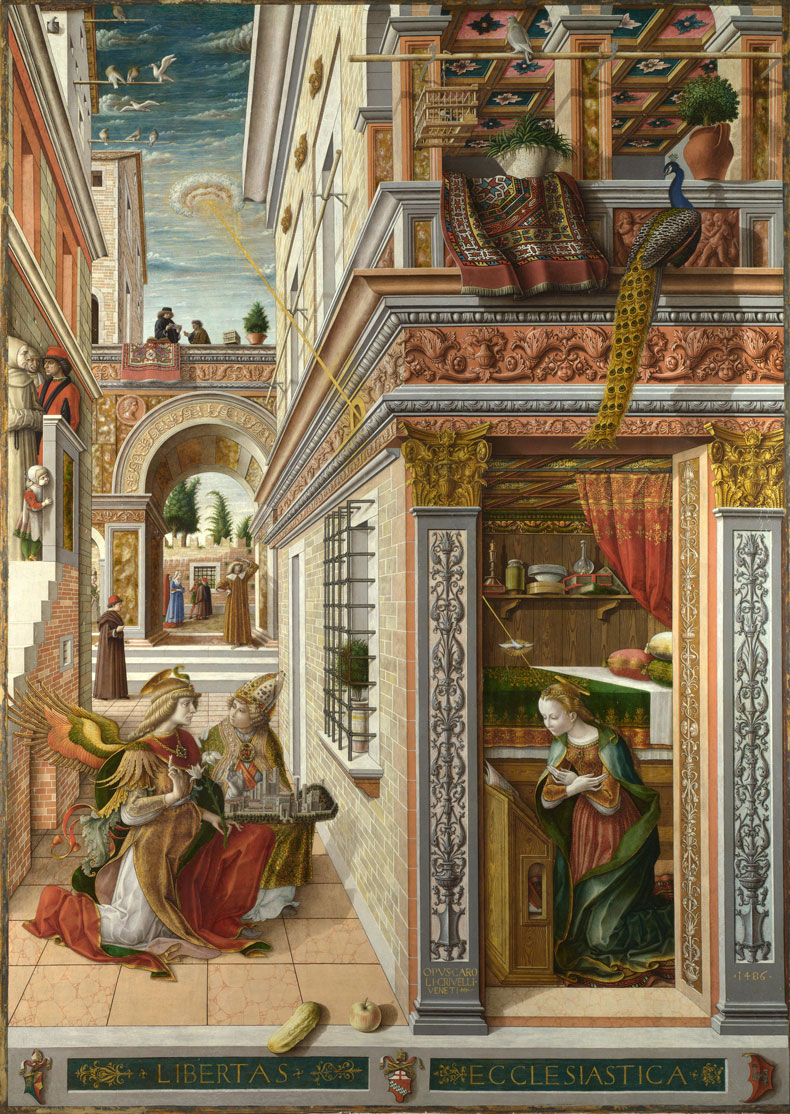Rakewell’s eye is drawn to many things – especially stories about eyes being drawn to things. The results of a study commissioned by the Mauritshuis in The Hague came in earlier this week, revealing just what it is we’re looking at when we look at a painting. Volunteers were fitted with eye-tracking equipment and a brain scanner and asked to look at five works in the museum’s collection – including Vermeer’s Girl with a Pearl Earring (c. 1665). Perhaps absence had made the heart grow fonder: the artwork had a holiday in Amsterdam last year to star in the Rijksmuseum’s blockbuster Vermeer exhibition, so it’s only natural that the Mauritshuis welcomed it home by lavishing it with close attention.
It turns out that when faced with Girl with a Pearl Earring, we tend to look her in the eye, before looking down to her mouth and then to the earring – and then back again in what the researchers call a ‘sustained attention loop’. So beguiling is the painting that it garnered an ‘attention score’ of 0.48 – even higher than the score registered when the lift transporting the volunteers briefly stopped working without warning.
Girl with a Pearl Earring (c. 1665), Johannes Vermeer. Mauritshuis, The Hague
Rakewell usually grows jocular at all things ocular, but your correspondent finds themselves pondering the consequences of reducing art to datasets. Could more of such studies usher in an age of ‘optimised’ art, in which AI software, or desperate artists, try to game our photoreceptors?
As is often the case, taking the long view is somewhat cheerier. Artists have been breaking art down into rules, diagrams and schematics for hundreds of years. At the turn of the 16th century, Luca Pacioli published Divina proportione, featuring illustrations by Leonardo that made clear the links between art, geometry and inherently pleasing designs. (Many of Pacioli’s ideas drew from an earlier treatise by Piero della Francesca.)
Leonardo is often cited as a proponent of the ‘golden ratio’, with his Vitruvian Man (c. 1490) regarded as the prime example of a design that consciously incorporated mathematically harmonious principles. But though this claim holds little water, other artists have actively pursued the golden ratio – Salvador Dalí, with his Sacrament of the Last Supper (1955), being perhaps the most famous. Rakewell also confesses to being partial to the work of M.C. Escher, who experimented tirelessly with perspective and planes to send the eye darting about the canvas.
Escher’s visions seem simple next to some of the work of the Venetian painter Carlo Crivelli, particularly The Annunciation, with Saint Emidius (1486). A rectilinear feast for the eyeballs, it is so exquisitely detailed in foreground, mid ground and background that Rakewell finds it hard to imagine how a heat map derived from eyeball data might look for this painting. Perhaps the anodes applied to the head would simply explode.

The Annunciation, with Saint Emidius (1486), Carlo Crivelli. National Gallery, London
In the mid 17th century, Samuel van Hoogstraten, a keen student of Rembrandt, knew how to get the eye zigzagging: his Peepshow with Views of the Interior of a Dutch House (c. 1655–60) pits rhomboids against rectangles in a ‘perspective box’ that yields three-dimensional views through peepholes at both sides of the box.

A Peepshow with Views of the Interior of a Dutch House (1655–60), Samuel van Hoogstraten. National Gallery, London
But the fascination of Girl with a Pearl Earring endures because of its simplicity. In this regard, we must doff our cap to Piero himself. When it comes to combining technical virtuosity with emotional force, Flagellation of Christ (1455–60) takes some beating.

The Flagellation of Christ (1455–60), Piero della Francesca. Image: Wikimedia Commons
